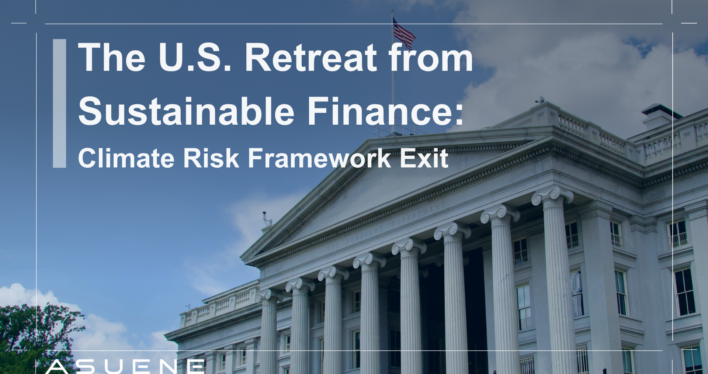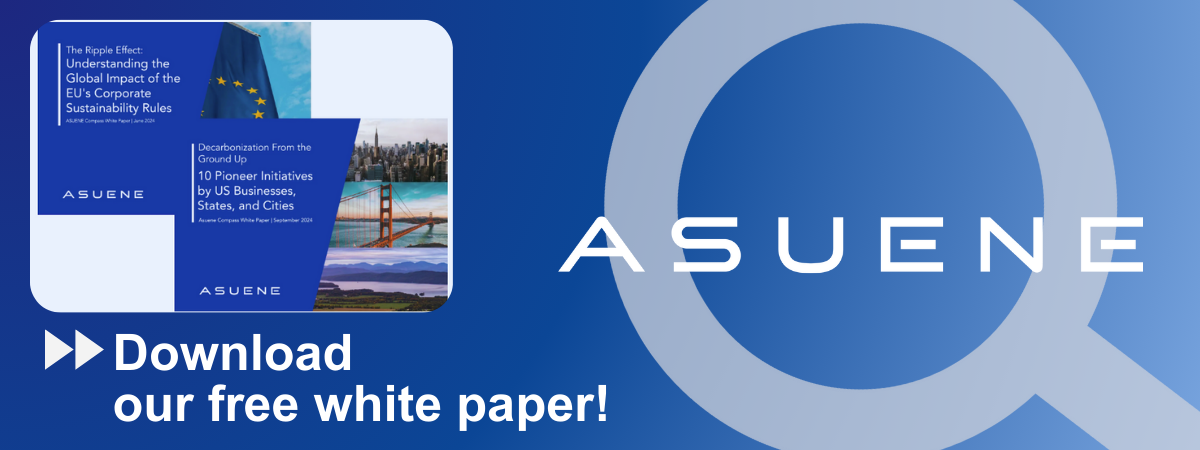- Article Summary
-
Introduction
In October 2025, U.S. major banking regulators, including the Board of Governors of the Federal Reserve System (Fed), the Federal Deposit Insurance Corporation (FDIC), and the Office of the Comptroller of the Currency (OCC), officially withdrew their Principles for Climate-Related Financial Risk Management for Large Financial Institutions. These Principles were designed to help banks with more than 100 billion dollars in assets understand and manage the physical and transition risks related to climate change. Their withdrawal marks more than a procedural shift. It reflects a broader retreat from sustainable finance frameworks in the United States, arriving in the same month that the Net-Zero Banking Alliance dissolved after several U.S. banks withdrew from membership. Together, these events reveal how political and regulatory sentiment is reshaping climate finance oversight in the world’s largest economy.
Understanding the Principles and Their Original Purpose
The 2023 Principles were issued to bring clarity and consistency to how large U.S. financial institutions manage climate-related risks. They outlined expectations across six key areas: governance, risk management, data and metrics, scenario analysis, internal controls, and public disclosure. Governance guidance focused on ensuring board oversight of climate risks. Risk management guidance emphasized integrating these risks into existing frameworks for credit, liquidity, and operational management. Scenario analysis encouraged banks to assess the resilience of their business models under different temperature pathways and policy outcomes.
The Principles aligned the United States with emerging global standards, such as those developed by the European Central Bank and the Basel Committee. While they were not binding rules, they signaled that U.S. regulators viewed climate change as a legitimate driver of financial risk. Their intent was prudential, focused on financial stability rather than environmental policy. A blue-based table could illustrate their structure, showing each principle alongside its intended outcome, for example: board accountability, internal process integrity, and consistent disclosure to investors.

Why the Framework Was Withdrawn and What That Signals
The official explanation for rescinding the Principles cited overlap with existing supervisory frameworks for safety and soundness. Regulators argued that banks already have the tools needed to manage any type of risk, including those related to climate. This reasoning has merit, since duplicative guidance can blur accountability and increase compliance costs. However, the timing and framing of the withdrawal also suggest a broader recalibration of regulatory priorities. The decision aligns with a wider slowdown in U.S. sustainable finance initiatives, indicating that while efficiency may have been a factor, it was likely accompanied by a broader policy retreat from climate-focused oversight. Yet the decision also reflects the broader political and ideological climate. Across the United States, state legislatures and federal representatives have questioned the relevance of climate-related supervision and have challenged ESG-focused investment strategies.
The timing coincides with the collapse of the Net-Zero Banking Alliance in October 2025. Many U.S. banks left the alliance earlier in the year, citing litigation risks and political scrutiny. The withdrawal of the Principles reinforces this pattern. Both developments suggest an environment where financial institutions face diminishing incentives to align with international sustainability norms. In contrast, regulators in Europe and Asia are strengthening climate-risk oversight.

The Implications for Financial Institutions and Investors
For large financial institutions, the immediate effect is uncertainty. Without the Principles, there is no standardized supervisory expectation for how to quantify or disclose climate-related financial risk. Banks now face a patchwork of investor demands, voluntary frameworks, and international pressures. This regulatory gap increases inconsistency and may heighten systemic exposure to unrecognized climate risks.
Market forces, however, continue to move in the opposite direction. Investors, insurers, and credit-rating agencies treat climate risk as material to long-term financial performance. Even in the absence of federal guidance, institutions will still need to model and report these exposures to maintain access to capital markets. In addition, global clients operating in regions with strict disclosure standards may require U.S. lenders to adhere to equivalent transparency.
The reputational implications are also significant. U.S. banks may appear less aligned with global sustainability norms, potentially weakening their competitiveness in transition finance and green capital markets. For investors, this divergence introduces a new layer of due diligence complexity, as U.S. assets may no longer be evaluated under the same risk assumptions as European or Asian peers.
Conclusion
The withdrawal of the Climate-Risk Principles is a defining moment in the evolving landscape of sustainable finance. It reflects a shift in the United States away from formal regulatory engagement with climate-related financial risks at the very time when those risks are becoming more visible. It signals a broader retreat from coordinated climate-finance governance and supervisory alignment.
Yet this retreat does not eliminate the risks themselves. Physical events, market transitions, and investor expectations continue to influence financial stability. Without regulatory guidance, responsibility for addressing climate risk now lies with the institutions themselves. Banks that maintain rigorous governance, scenario testing, and transparent reporting will remain better positioned to navigate the next decade of climate-related uncertainty. The strength of U.S. sustainable finance will depend less on regulation and more on whether market participants recognize climate risk as a core element of financial prudence.
Why Work with ASUENE Inc.?
ASUENE is a key player in carbon accounting, offering a comprehensive platform that measures, reduces, and reports emissions. ASUENE serves over 10,000 clients worldwide, providing an all-in-one solution that integrates GHG accounting, ESG supply chain management, a Carbon Credit exchange platform, and third-party verification.
ASUENE supports companies in achieving net-zero goals through advanced technology, consulting services, and an extensive network.


